 W
WThe Battle of North Fork or the Battle of the North Fork of the Red River occurred on September 28, 1872, near McClellan Creek in Gray County, Texas, United States. A monument on that spot marks the site of the battle between the Comanche Indians under Kai-Wotche and Mow-way and a detachment of cavalry and scouts under U.S. Army Colonel Ranald S. Mackenzie. There was an accusation that the battle was really an attempt "to make a massacre," as during the height of battle some noncombatants were wounded while mixed in with warriors.
 W
WDaniel Boone was an American pioneer and frontiersman whose exploits made him one of the first folk heroes of the United States. Boone became famous for his exploration and settlement of what is now Kentucky, which was then beyond the western borders of the Thirteen Colonies. Despite resistance from American Indians, for whom Kentucky was a traditional hunting ground, in 1775 Boone blazed the Wilderness Road through the Cumberland Gap and into Kentucky. There he founded Boonesborough, one of the first English-speaking settlements west the Appalachian Mountains. By the end of the 18th century, more than 200,000 people entered Kentucky by following the route marked by Boone.
 W
WThe capture and rescue of Jemima Boone and the Callaway girls is a famous incident in the colonial history of Kentucky. Three girls were captured by a Cherokee-Shawnee raiding party and later rescued by Daniel Boone and his party, celebrated for their success. The incident was portrayed in 19th-century literature and paintings: James Fenimore Cooper created a fictionalized version of the episode in his novel The Last of the Mohicans (1826). The incident was the subject of a painting entitled The Abduction of Boone's Daughter by the Indians by Charles Ferdinand Wimar.
 W
WMary Campbell was an American colonial settler, taken captive as a child by Native Americans during the French and Indian War. Later rescued, she is believed to have been the first white child to travel to the Western Reserve.
 W
WSusanna Cole was the lone survivor of an American Indian attack in which many of her siblings were killed, as well as her famed mother Anne Hutchinson. She was taken captive following the attack and held for several years before her release.
 W
WThe Council House Fight, often referred to as the Council House Massacre, was a decidedly lopsided fight between soldiers and officials of the Republic of Texas and a delegation of Comanche chiefs during a peace conference in San Antonio on March 19, 1840. The meeting took place under an observed truce with the purpose of negotiating the exchange of captives and ultimately facilitating peace after two years of war. The Comanches sought to obtain recognition of the boundaries of the Comancheria, their homeland, while the Texians wanted the release of Texian and Mexican citizens held prisoner by the Comanches.
 W
WIn July 1755, a small outpost in southwest Virginia, at the present day Blacksburg, was raided by a group of Shawnee warriors, who killed at least five people including an infant child and captured five more. The Indians traveled back with their hostages to a Shawnee village in Kentucky. One of the captives, Mary Draper Ingles later escaped and returned home on foot through the wilderness. Although many of the actual circumstances of the incident are uncertain, including the date of the attack, the event remains a dramatic story in the history of Virginia.
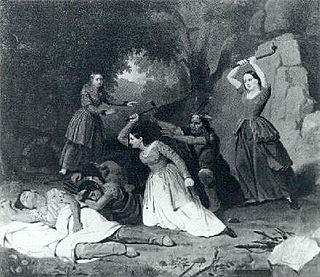 W
WHannah Duston was a colonial Massachusetts Puritan mother of nine who was taken captive by Abenaki people from Québec during King William's War, with her newborn daughter, during the Raid on Haverhill in 1697, in which 27 colonists were killed. While detained on an island in the Merrimack River in present-day Boscawen, New Hampshire, she killed and scalped ten of the Native American family members holding them hostage, with the assistance of two other captives. She claimed the Abenaki had killed her baby during the journey to the island.
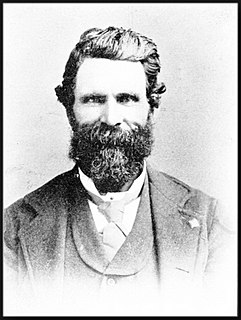 W
WLamar Fontaine was an American military officer, spy, surveyor, poet and author. He served in the Mexican–American War and the American Civil War, and he was a member of the Ku Klux Klan. He drew maps of Israel, Japan and China. He authored poetry and a memoir.
 W
WJane Frazier or Fraser was a woman captured by Native Americans in the 18th century. She lived in a log house built in 1754 just beyond the Cumberland, Province of Maryland city limits. On October 1, 1755, while returning to her home from the Fort Cumberland Trading Post several miles away, Jane was captured by Native Americans and taken to the Miami River in Ohio. She escaped and returned 18 months later to learn that her husband John had remarried because he thought that she was dead. Jane’s husband took her back and sent his second wife home to her father.
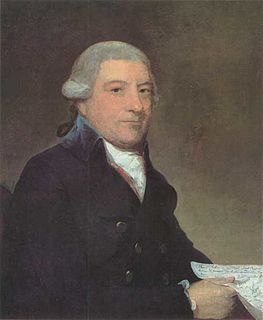 W
WAlexander Henry 'The Elder' was one of the leading pioneers of the British-Canadian fur trade, following the British Conquest of New France; a partner in the North West Company; and a founding member and vice-chairman of the Beaver Club. In 1763–64, he lived and hunted with Wawatam of the Ojibwa, who had adopted him as a brother.
 W
WMary Draper Ingles, also known in records as Mary Inglis or Mary English, was an American pioneer and early settler of western Virginia. In the summer of 1755, she and her two young sons were among several captives taken by Shawnee after the Draper's Meadow Massacre during the French and Indian War. They were taken to Lower Shawneetown at the Ohio and Scioto rivers. Ingles escaped with another woman after two and a half months and trekked 500 to 600 miles, crossing numerous rivers, creeks, and the Appalachian Mountains to return home.
 W
WMary Jemison (Deh-he-wä-nis) was a Scots-Irish colonial frontierswoman in Pennsylvania and New York, who became known as the "White Woman of the Genesee." She had been taken as a youth and adopted into a Seneca family, assimilating to their culture, marrying two Native American men in succession, and having children with them. In 1824 she published a memoir of her life, a form of captivity narrative. In 1755 during the French and Indian War, Jemison at age 12 was captured with most of her family in a Shawnee mourning raid in what is now Adams County, Pennsylvania. The others of her family were killed. She and an unrelated young boy were adopted by Seneca families. She became fully assimilated, marrying a Delaware (Lenape), and, after his death, a Seneca man. She chose to remain a Seneca rather than return to American colonial culture.
 W
WCharles Johnston was an American lawyer and author who spent five weeks as a captive of a Shawnee group, and later wrote a captivity narrative of his experience. In 1790, he was traveling down the Ohio River by keelboat with his employer John May, a Kentucky land speculator, as well as dry goods dealer Jacob Skyles, frontiersman William Flinn, and sisters Dolly and Peggy Fleming. Near the juncture of the Ohio and Scioto Rivers, the party was lured to the bank by an Indian stratagem. May and Dolly Fleming were killed outright and the four others taken prisoner. Johnston spent five weeks with the Shawnee before being ransomed for six hundred silver brooches by Francis Duchouquet, a Canadian trader. Johnston repaid his redeemer upon returning to Virginia. In 1827, he wrote his memoirs, A Narrative of the Incidents Attending Capture, Detention, and Ransom of Charles Johnston. He died in 1833.
 W
WJohn B. McClelland (1734–1782) was an officer in the American Revolutionary War. He was captured by American Indians during the Crawford Expedition and tortured to death at the Shawnee town of Wakatomika, which is currently located in Logan County, Ohio, about halfway between West Liberty, Ohio and Zanesfield, Ohio.
 W
WJosephine Meeker, was a teacher and physician at the White River Indian Agency in Colorado Territory, where her father Nathan Meeker was the United States (US) agent. On September 29, 1879, he and 10 of his male employees were killed in a Ute attack, in what became known as the Meeker Massacre. Josephine, her mother Arvilla Meeker, and Mrs. Shadruck Price and her two children were taken captive and held hostage by the Ute tribe for 23 days.
 W
WThe Northeast Coast Campaign (1745) occurred during King George's War from 19 July until 5 September 1745. Three weeks after the British Siege of Louisbourg (1745), the Wabanaki Confederacy of Acadia retaliated by attacking New England settlements along the coast of present-day Maine below the Kennebec River, the former border of Acadia. They attacked English settlements on the coast of present-day Maine between Berwick and St. Georges, within two months there were 11 raids - every town on the frontier had been attacked. Casco was the principal settlement.
 W
WThe Northeast Coast Campaign (1746) was conducted by the Wabanaki Confederacy of Acadia against the New England settlements along the coast of present-day Maine below the Kennebec River, the former border of Acadia. during King George's War from July until September 1746. They attacked English settlements on the coast of present-day Maine between Berwick and St. Georges, within two months there were 9 raids - every town on the frontier had been attacked. Casco was the principal settlement.
 W
WThe Northeast Coast Campaign (1747) was conducted by the Wabanaki Confederacy of Acadia against the New England settlements along the coast of present-day Maine below the Kennebec River, the former border of Acadia. during King George's War from July until September 1747. They attacked English settlements on the coast of present-day Maine between Berwick and St. Georges, within two months there were 11 raids - every town on the frontier had been attacked. Casco was the principal settlement.
 W
WMary Ann Oatman (1844–1851) was the sister of Olive Oatman and a survivor of abusive abduction by an unknown tribe—possibly the Yavapai people, though many historians argue that it is impossible to know.
 W
WOlive Ann Oatman was a woman born in Illinois. In 1851, while traveling from Illinois to California with a company of Mormon Brewsterites, the family was attacked by a small group from a Native American tribe. Though she identified them as Apache, they were most likely Tolkepayas. They clubbed many to death, left her brother Lorenzo for dead, and enslaved Olive and her younger sister, Mary Ann. The two were captive for one year and then traded to the Mohave people. While Lorenzo exhaustively attempted to recruit governmental help in searching for them, Mary Ann died from starvation and Olive spent four years with the Mohave.
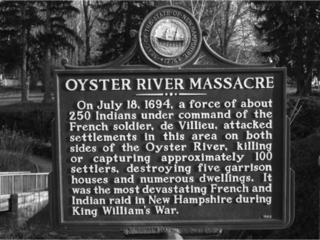 W
WThe Raid on Oyster River happened during King William's War, on July 18, 1694, at present-day Durham, New Hampshire.
 W
WCynthia Ann Parker, also known as Naduah, was an American who was kidnapped in 1836, around age 10, by a Comanche war band which had attacked her family's settlement. Her Comanche name means "someone found".
 W
WJohn Payzant was a Foreign Protestant, prominent New Light Congregational minister in Liverpool, Nova Scotia and was taken captive for four years with his siblings and pregnant mother after the Raid on Lunenburg (1756). He was born Jean Paysant in St. Helier, Jersey, Channel Islands to French Huguenots Louis Payzant (1695–1756) and his wife Marie Anne Noget (1711–1796). The family moved to Lunenburg, Nova Scotia, in 1753. At the May 1756 raid, mercenary natives for the French shot and scalped his father and three others. For the first year, he and his siblings were adopted by the Indigenous family while his pregnant mother was taken to Quebec. John learned to speak their native language. He later wrote: “I was [later] a languattor [translator] for the Indians as I had learnt that Language when prisoner among them." After one year of captivity by the natives, he and his siblings were eventually released to re-connect with their mother in Quebec. “When I arrived at Quebec I was sent to the Jesuits to be instructed in the Learning of that Academy and during my stay there I made great proficiency in the Arts that were taught in that School, and as they were fond to proselyte they took the more pains with me." In 1760 they all returned to Nova Scotia, settling in Falmouth. He then became a minister in Liverpool, Nova Scotia (1793). He was part of the Great Awakening and was a follower of Henry Alline and married his sister Mary in 1774. They had one daughter and eight sons. Rev. John Payzant died at 84 and is buried in Liverpool's Old Burying Ground.
 W
WThe 1704 Raid on Deerfield occurred during Queen Anne's War on February 29 when French and Native American forces under the command of Jean-Baptiste Hertel de Rouville attacked the English frontier settlement at Deerfield, Massachusetts, just before dawn. They burned part of the town and killed 47 villagers. The raiders left with 112 settlers as captives, whom they took overland the nearly 300 miles to Montreal. Some died or were murdered along the way, and 60 were later ransomed by family and community. Others were adopted by Mohawk families and became assimilated into the tribe. In this period, the English and their Indian allies were involved in similar raids against French villages along the northern area between the spheres of influence.
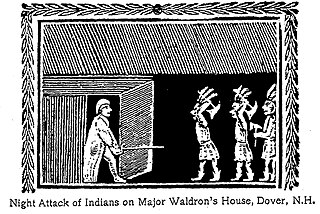 W
WThe Raid on Dover happened in Dover, New Hampshire on June 27–28, 1689. Led by Chief Kancamagus, it began King William's War, a series of Indian massacres orchestrated by Jean-Vincent d'Abbadie de Saint-Castin and Father Louis-Pierre Thury.
 W
WThe Raid on Haverhill was a military engagement that took place on August 29, 1708 during Queen Anne's War. French, Algonquin, and Abenaki warriors under the command of Jean-Baptiste Hertel de Rouville descended on Haverhill, then a small frontier community in the Province of Massachusetts Bay. In the surprise attack, 16 people were killed and another 14 to 24 were taken captive. A rapid militia muster gave chase, and in a skirmish later in the day, nine of the French and Indian party were killed and some of their prisoners escaped.
 W
WThe Raid on Lunenburg occurred during the French and Indian War when Mi'kmaw and Maliseet fighters attacked a British settlement at Lunenburg, Nova Scotia on May 8, 1756. The native militia raided two islands on the northern outskirts of the fortified Township of Lunenburg, [John] Rous Island and Payzant Island. According to French reports, the Raiding party killed twenty settlers and took five prisoners. This raid was the first of nine the Natives and Acadians would conduct against the peninsula over a three-year period during the war. The Wabanaki Confederacy took John Payzant and Lewis Payzant prisoner, both of whom left written account of their experiences.
 W
WMary Rowlandson, née White, later Mary Talcott, was a colonial American woman who was captured by Native Americans in 1676 during King Philip's War and held for 11 weeks before being ransomed. In 1682, six years after her ordeal, The Sovereignty and Goodness of God: Being a Narrative of the Captivity and Restoration of Mrs. Mary Rowlandson was published. This text is considered a formative American work in the literary genre of captivity narratives. It went through four printings in 1682 and garnered readership both in the New England colonies and in England, leading some to consider it the first American "bestseller".
 W
WSacagawea was a Lemhi Shoshone woman who, at age 16, met and helped the Lewis and Clark Expedition in achieving their chartered mission objectives by exploring the Louisiana Territory. Sacagawea traveled with the expedition thousands of miles from North Dakota to the Pacific Ocean, helping to establish cultural contacts with Native American populations and contributing to the expedition's knowledge of natural history in different regions.
 W
WFrances Slocum was an adopted member of the Miami people. Slocum was born into a Quaker family that migrated from Warwick, Rhode Island, in 1777 to the Wyoming Valley in Luzerne County, Pennsylvania. On November 2, 1778, when Slocum was five years old, she was captured by three Delaware warriors at the Slocum family farm in Wilkes-Barre, Pennsylvania. Slocum was raised among the Delaware in what is now Ohio and Indiana. With her marriage to Shepoconah, who later became a Miami chief, Slocum joined the Miami and took the name Maconaquah. She settled with her Miami family at Deaf Man's village along the Mississinewa River near Peru, Indiana.
 W
WThe Spirit Lake Massacre was an attack by a Wahpekute band of Santee Sioux on scattered Iowa frontier settlements during a severe winter. Suffering a shortage of food, the renegade chief Inkpaduta led 14 Sioux against the settlements near Okoboji and Spirit lakes in the northwestern territory of Iowa near the Minnesota border, in revenge of the murder of Inkpaduta's brother, Sidominadotah, and Sidominadotah's family by Henry Lott. The Sioux killed 35-40 settlers in their scattered holdings, took four young women captive, and headed north. The youngest captive, Abbie Gardner, was kept a few months before being ransomed in early summer. It was the last Native American attack on settlers in Iowa, but the events increased tensions between the Sioux and settlers in the Minnesota Territory. Nearly 30 years after the events, in 1885 Gardner-Sharp published her memoir, History of the Spirit Lake Massacre and Captivity of Miss Abbie Gardner, which was reprinted several times in small editions. It was one of the last captivity narratives written of European Americans' being held by Native Americans. In 1891, Gardner-Sharp purchased the primitive family cabin and returned home. For the last 30 years of her life, she subsisted on the modest earnings from her book and souvenir sales. The town erected an historical monument to commemorate the attack. The State of Iowa now maintains the park and Abbie Gardner Sharp home site.
 W
WJohn Stark was a New Hampshire native who served as an officer in the British Army during the French and Indian war and a major general in the Continental Army during the American Revolution. He became widely known as the "Hero of Bennington" for his exemplary service at the Battle of Bennington in 1777.
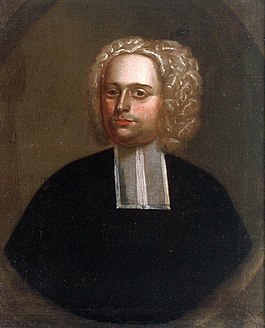 W
WJohn Williams was a New England Puritan minister who became famous for The Redeemed Captive, his account of his captivity by the Mohawk after the Deerfield Massacre during Queen Anne's War. He was also a central voice in the inoculation controversy of 1721. He was an uncle of the notable pastor and theologian Jonathan Edwards.